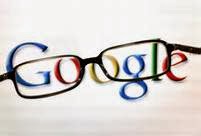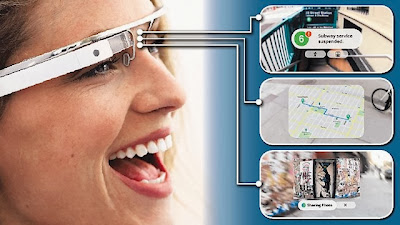The ranks of the world’s billionaires have yet again reached all-timehighs. The 2013 Billionaires list now boasts 1,426 names, with an aggregate net worth of $5.4 trillion, up from $4.6 trillion. 210 newten-figure fortunes are found out . Once again the U.S. leads the list with 442 followed by Asia-Pacific (386), Europe (366), the Americas (129) and the Middle East & Africa (103).
Resurgent asset prices are the driving force behind the rising wealth of the super-rich around the globe. While last year almost as many fortunes fell as rose, this year gainers outnumbered losers by 4-to-1. Many new names made the list thanks to free-spending consumers. To name a few: Diesel jeans mogul Renzo Rosso at $3 billion, retailer Bruce Nordstrom at $1.2 billion and 4.2k designer Tory Burch at $i billion.
Carlos Slim is once again the world’s richest person, followed by Bill Gates. Arnancio Ortega of Spanish retailer Zara moves upto No. 3 for the first time. 2.0k He is the year’s biggest gainer, adding $19.5 billion to his fortune in one year. He moves ahead of Warren Buffett, despite the fact that the U.S. investing Tweet legend added $9.5 billion to his fortune. This is the first year since 2000 that 336 Buffet has not been among the top 3.
The year’s biggest loser is Brazilian Eike Batista, whose fortune dropped by $19.4 billion, or equivalent to about $50 million a day. His rank falls from No. 7 to No. 100 in the world.
Resurgent asset prices are the driving force behind the rising wealth of the super-rich around the globe. While last year almost as many fortunes fell as rose, this year gainers outnumbered losers by 4-to-1. Many new names made the list thanks to free-spending consumers. To name a few: Diesel jeans mogul Renzo Rosso at $3 billion, retailer Bruce Nordstrom at $1.2 billion and 4.2k designer Tory Burch at $i billion.
Carlos Slim is once again the world’s richest person, followed by Bill Gates. Arnancio Ortega of Spanish retailer Zara moves upto No. 3 for the first time. 2.0k He is the year’s biggest gainer, adding $19.5 billion to his fortune in one year. He moves ahead of Warren Buffett, despite the fact that the U.S. investing Tweet legend added $9.5 billion to his fortune. This is the first year since 2000 that 336 Buffet has not been among the top 3.
The year’s biggest loser is Brazilian Eike Batista, whose fortune dropped by $19.4 billion, or equivalent to about $50 million a day. His rank falls from No. 7 to No. 100 in the world.
Carlos Slim Hem
Net worth: $73 billion
Country: Mexico
Source of wealth: Telecom
Mexico’s telecom mogul retains his spot as the worlds richest man for the fourth
year in a row. His net worth is up $4 billion from 2012 but is still $1 billion
shy of his all-time record. A boost came from surging stock prices at his
financial arm, Gwpo Financiero Inbursa, and at his industrial and retait giant,
Grupo Carso. This year he added soccer to the mix, buying into Mexico’s Leon and
Pachuca clubs and Spain’s Real Oviedo.
Bill Gates
Net worth: $67 billion
Country: U.S.
Source of wealth: Microsoft
Bill Gates’ net worth rose $6 billion from last Marchdue to gains in his
investment portfolio; hisholdings include tech hygiene firm Ecolab, waste
collector Republic Services and Mexican Coke bottler FEMSA. In February the first
12 non-Americans joined Bill Gates’ and warren Buffett's Giving Pledge, in which
the ultra-wealthy pledge to give away at least half their net worth to charity.
Amancio Ortega
Net worth: $57 billion
Country: Spain
Sowce of wealth: Zara
Amancio Ortega is this year's biggest gainer; his wealth is up $I9.5 billion,
pushing his fortune to a record high and moving him ahead of Warren Buffett. While
he’s no longer the chairman of dothing retader Inditex (he stepped down in 2011),
he controls nearty 60% of the company's shares, which were up more than 50%. The
company, which operates under several brand names including Zara, Massimo Dutti
and Srtadvahus, has nearly 5,900 stores in 86 countries.
Warren Buffett
Net worth: $53.5 billion
Country: U.S.
Source of wealth: Berkshire Hathaway
Although Buffett is the year's second biggest gainer, adding $9.5 billion to his
fortune, is the fist time since 2000 that he has not been among the three richest
billionaires in the world. In February, Buffett announced a deal with Brazilian
bilionawe Jorge Paulo Lemann's 36 Capital to snap up iconic ketthup producer H.J.
Heinz Co. for $23.2 .
Larry Ellison
Net worth: $43 billion
Country: U.S.
Source of wealth: Oracle
The worlds fifth-richest man is $7 billion wealthier than a year ago, thanks to a
more than 20% jump in the value of his Oracle stock. In the past year,the software
mogul has been on a real estate buying spree, acquiring properties in Malibu and
98% of the Hawaiian island of Lanai from billionaire David Murdock for a reported
$500 million. He just added Hawaian airline Island Air to his holdings.
Charles Koch
Net worth: $34 billion
Source: U.S.
Source of wealthh: Deversified
Koch and his brother David together own 84% of Koch Industries, the second biggest
private company in America. Its estimated sales is $115 billion, up from $100
billion a year ago. The company, which has big investments in refining and
chemicals, is thriving amid falling natural-gas prices and recovering demand. It
is also getting a boost from inproving operations at Koch's Georgia-Pacific,
manufacturer of Brawny paper towels, Dixie Cups and Angel Soft toilet paper. The
siblings are each up $9 billion apiece.
David Koch
Net worth: $34 billion
Country: U.S.
Source of wealth: Diversified
David Koch is once again New York City's richest resident, running the chemical
technology side of Koch Industries from his Manhattan base. His fortune climbed $9
billion since last year, mostly on surging refining and chemical profits as the
price of natural gas, an important feedstock, fell. Things didn't go as well on
the political front as they failed in their quest to oust Barack Obama.
Li Ka-Shing
Net worth: $31 billion
Country: Hong Kong
Source of wealth : Diversified
Once again, Li Ka-shing is Asia's richest person and the only one from the region
among the world’s top 20 richest. His fortune jumped $5.5 billion to $31 bilion,
as shares of his biggest holdings all rose 10% or more. He also received 2012
dividends of $86o million.
Liliane Bettencourt & family
Net worth: $3o bdlion
Country: France
Source of wealth: L'OrealLikane Bettencourt,
The 90-year-old LOreal heiress who suffers from dementia, is the world's richest
woman, thanks to a 30% increase in the value of the French cosmetic
firms shares that drove up her net worth by $6 billion year over year. Her
daughter Francoise Bettencourt-Meyers is guardian of the fortune, while her
grandson Jean-Victor Meyers sits on LOreals board.
Bernard Arnault
Net worth: $29 billion
Country: France
Source of weakh: LVMH
The worlds most influential tastemaker - he controls fashion companies such as
Louis Vuitton and Bulgan - ships from no. 4 to no. 10 in the world, due to more
information about his complex shareholdings.
Sunny Kabra































